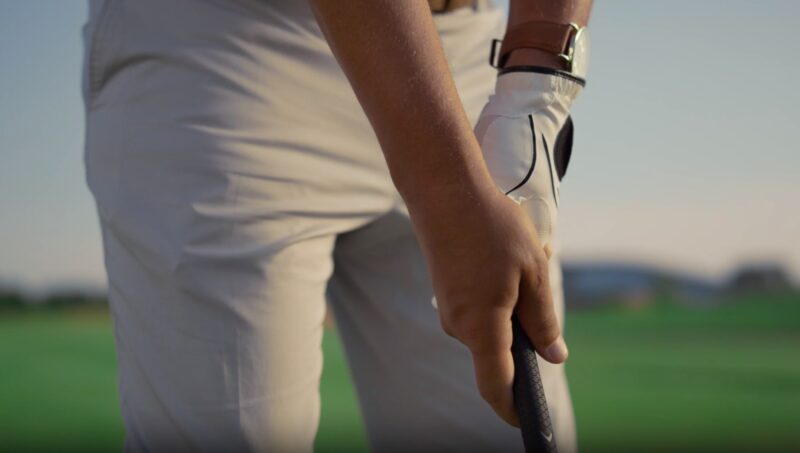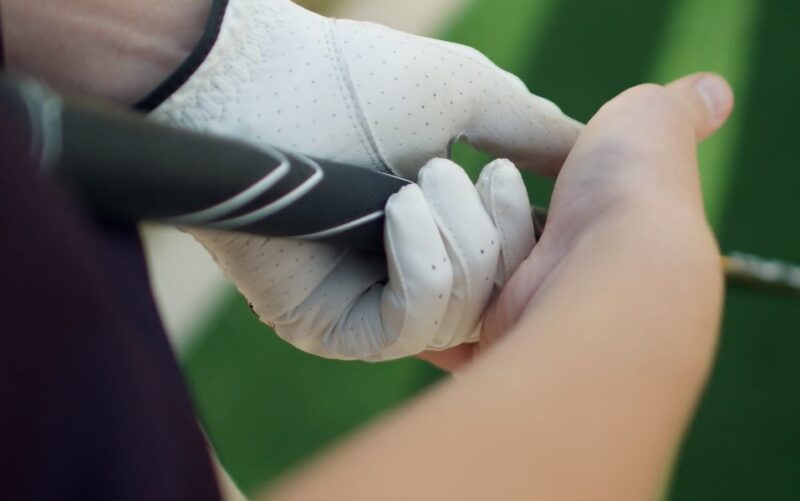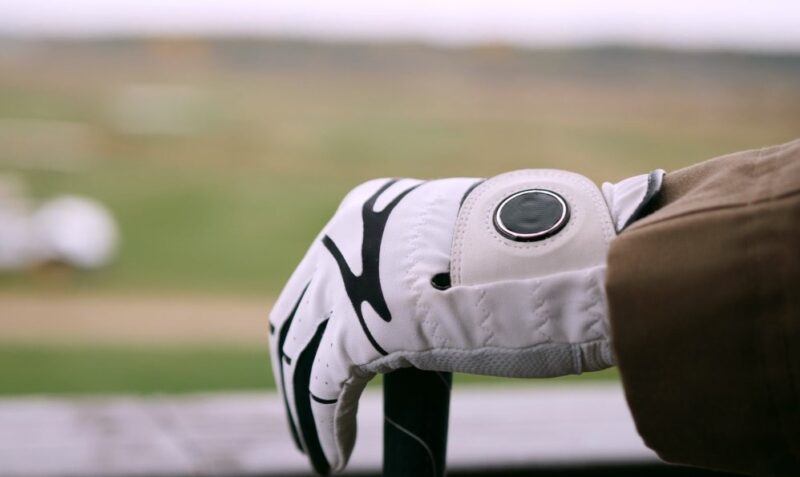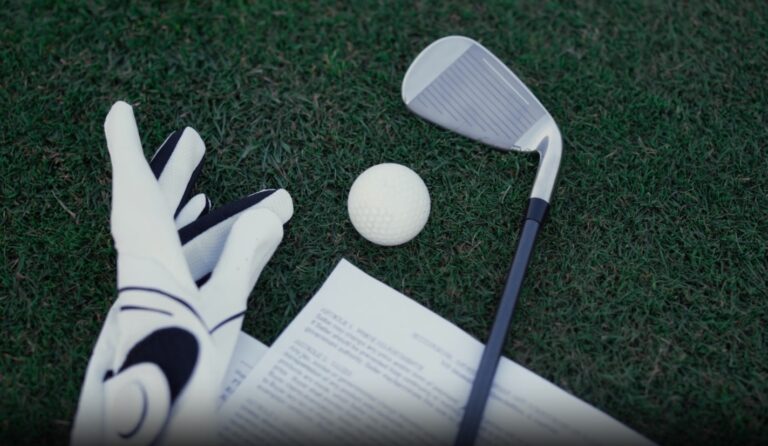There are many details that can improve your skills and accuracy when playing golf. For example, proper selection of the grip, putter, and more. However, one detail that many people forget about is the right selection of gloves, or wearing it on the right hand. Choosing the right model and using it on the right hand can have a significant impact on the game.
Evolution

The game of golf has evolved over centuries. Therefore, there is a long tradition related to the evolution of this equipment. Even though it is a simple piece of gear, it represents an important aspect of the sport.
History and Evolution
They made their entrance into the game in the late 1800s. Initially, they were used by both men and women to ensure a firm grip and to protect the hands from the wooden shafts of the clubs, which could be harsh on the skin.
Over time, as golf club technology advanced and the shafts became smoother, this piece of equipment evolved more into a tool for enhancing grip, especially in adverse conditions.
Purpose and Importance
Today, the primary purpose remains the same: to improve the golfer’s grip. Sweaty palms, humid conditions, or even light drizzles can affect how firmly a golfer holds their club.
It is typically made of leather or synthetic materials, ensures that the club doesn’t slip, allowing for more controlled swings and better overall performance.
Proper Placement

It’s not just about the outfit; it’s about wearing it on the right hand. And when we say “right”, we don’t necessarily mean the right hand. The choice depends on biomechanics and the science of golf swings.
Dominant Hand vs. Non-Dominant Hand
Contrary to what one might think, golfers generally wear their gloves on the opposite hand of their dominant hand. This means a right-handed golfer would wear it on their left hand and vice versa.
Why? It’s the non-dominant hand that takes the lead in a golf swing. For a right-handed golfer, the left hand provides the power and direction, while the right hand guides the swing. Therefore, it’s crucial for the non-dominant hand to have an excellent grip, which the glove provides.
Feel and Control
While it’s essential for the non-dominant hand to have a solid grip, the dominant hand benefits from a direct connection to the club, allowing for better feel and control.
By not wearing a glove on the dominant hand, golfers can better sense the club’s position, the impact with the ball, and make minute adjustments mid-swing if necessary.
Special Cases and Considerations

Though the general rule of thumb is for golfers to wear gloves on their non-dominant hand, there are exceptions and special considerations to keep in mind.
Wearing on Both Hands
Some golfers, especially those just starting, may opt to wear gloves on both hands. This can be due to various reasons like extreme weather conditions, or simply to protect their hands during extensive practice sessions. It provides an even grip but might reduce the tactile connection with the club.
When to Replace it?
Golf gloves, like any piece of equipment, wear out over time. A worn-out glove can lose its effectiveness in providing a proper grip. It’s vital to periodically inspect your glove for signs of wear and tear, such as thinning areas or holes, and replace it when necessary.
Personal Preference
At the end of the day, while traditions, science, and general advice can guide golfers, personal preference plays a significant role. Some might find they perform better with a glove on their dominant hand, or without a glove at all. The key is to find what feels right and enhances one’s performance on the course.
Why Quality Matters?

Selecting a golf glove goes beyond just the hand you wear it on. The quality of the glove itself can significantly impact your grip and, subsequently, your game.
Materials and Craftsmanship
A good golf glove is typically made of high-quality materials like cabretta leather, which is known for its soft texture and excellent grip properties. The glove’s design should allow for a snug fit, ensuring that there are no loose areas that could interfere with the club’s grip.
Stitching quality is also crucial; poorly made gloves can come apart at the seams during play, leading to distractions or even performance issues.
The Role of Breathability
Breathability in a golf glove is vital for comfort. A well-ventilated glove will help in wicking away sweat, keeping the hand dry and ensuring a consistent grip throughout the game.
Many top-tier gloves feature perforations on the fingers or incorporate moisture-wicking materials to keep sweat at days or during intense rounds.
Tactile Sensation
While the primary purpose of a golf glove is to enhance grip, it should not do so at the expense of the golfer’s tactile sensation. A good quality glove will strike a balance between providing an excellent grip and allowing the golfer to feel the club in their hands.
This sensation is crucial in making those fine-tuned adjustments during a swing and gauging the effectiveness of a shot based on the feel of the club’s impact with the ball.
Sizing and Fit

One of the often-overlooked considerations when choosing a golf glove is the glove’s size and fit. A glove that doesn’t fit properly can adversely impact your game, no matter which hand you wear it on.
Importance of a Snug Fit
A glove that’s too large can create wrinkles or folds, leading to potential slippage during a swing. Conversely, a glove that’s too tight may restrict hand movements, making it challenging to maintain an optimal grip.
You can significantly improve your results when you combine it with the right grip technique. A snug-fitting glove molds to the hand’s contours, ensuring consistent grip and allowing for natural hand movements.
Measuring Your Hand for the Perfect Fit
When selecting a glove size, measure the circumference of your hand just below the knuckles, excluding the thumb. Most golf glove manufacturers provide sizing charts that correlate hand measurements to glove sizes.
It’s also beneficial to try on different brands, as sizing can vary slightly from one manufacturer to another.
Stretch and Flexibility
It’s important to remember that many golf gloves, especially those made of leather, will stretch slightly with use. A new glove should feel snug but not uncomfortably tight.
As you wear it, the glove will mold to the shape of your hand, resulting in a custom fit over time. The glove should also allow for flexibility, especially around the knuckles, ensuring you can grip the club comfortably without any restrictions.
FAQs
Can I wear a golf glove during putting?
Yes, you can wear a golf glove during putting, though many golfers choose to remove it for a better feel of the putter grip. You should also learn more about the proper putter length. It’s entirely up to personal preference; some find that the glove provides consistency, while others believe direct hand-to-grip contact offers better control during puts.
Are there specific golf gloves designed for winter play?
Winter golf gloves are designed to provide warmth while retaining the essential grip features. They are typically made of thicker materials and may have thermal linings to combat colder temperatures. Wearing a standard glove in cold weather might not provide the insulation required to keep hands comfortable and agile.
How should I care for my golf glove to extend its lifespan?
Proper care can extend the life of your golf glove. Always allow it to dry naturally after play, avoiding direct heat sources like radiators or direct sunlight. If it becomes dirty, gently hand wash it using mild soap and cold water. Store it flat to retain its shape, and consider using a glove stretcher if you want to maintain its form after washing.
Is there any advantage to wearing a synthetic glove over a leather one?
Both materials have their merits. Leather gloves, especially those made of cabretta leather, offer superior feel and tend to mold to the hand better. Synthetic gloves, on the other hand, can be more durable, less affected by moisture, and might provide a more consistent fit over time. Your choice should depend on personal preference, playing conditions, and how often you play.
I have allergies to certain materials. Are hypoallergenic golf gloves available?
Yes, some brands offer hypoallergenic golf gloves made from materials specifically designed to reduce the risk of allergic reactions. If you have known skin sensitivities or allergies, always check the materials and consider seeking out these specialty gloves to ensure comfort and safety during play.
Can I customize my golf glove with personal designs or logos?
Many golf glove manufacturers offer customization options, allowing you to add logos, initials, or even custom designs. This can be a great way to show team spirit, company branding, or simply add a personal touch to your golfing gear. Always check with the specific brand or retailer to see what customization options they offer.
Summary
The key is to understand that it is more than just an accessory. Making the right choice can influence the game, and make you feel more comfortable while achieving better accuracy or power.

